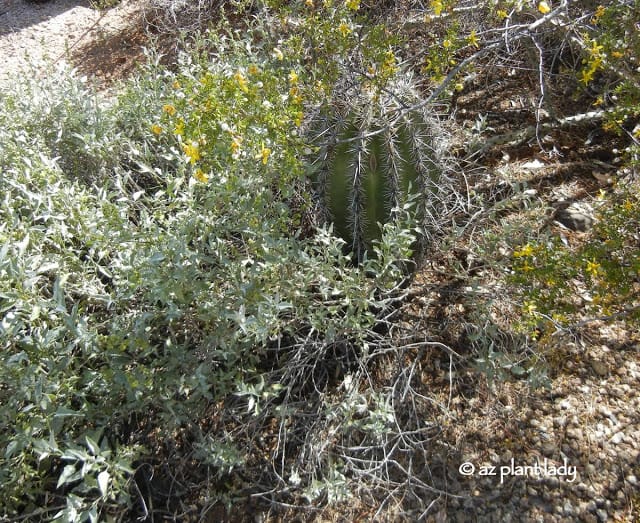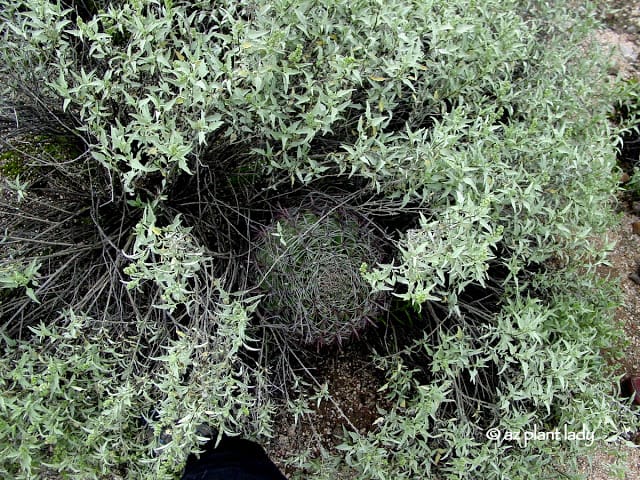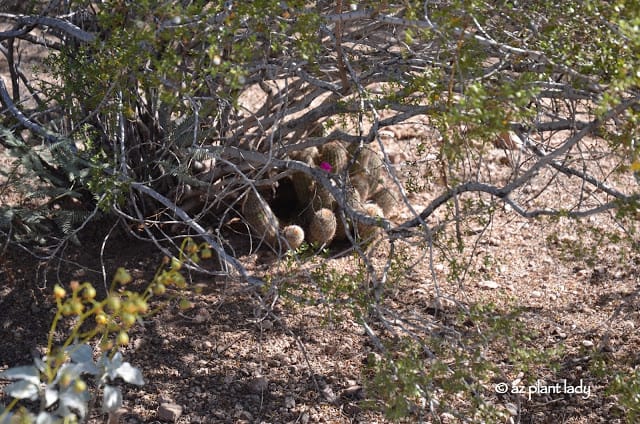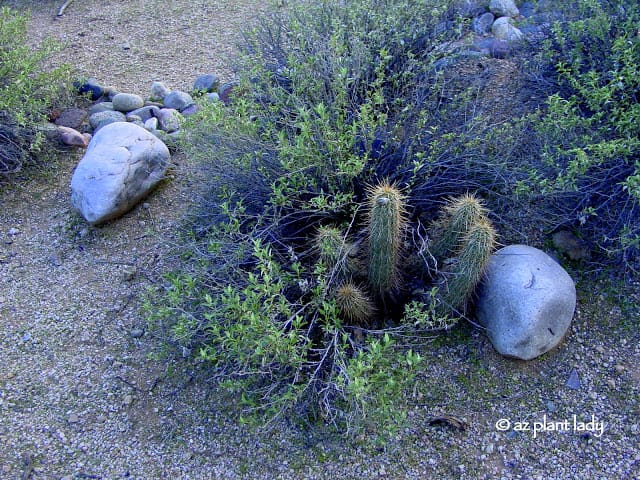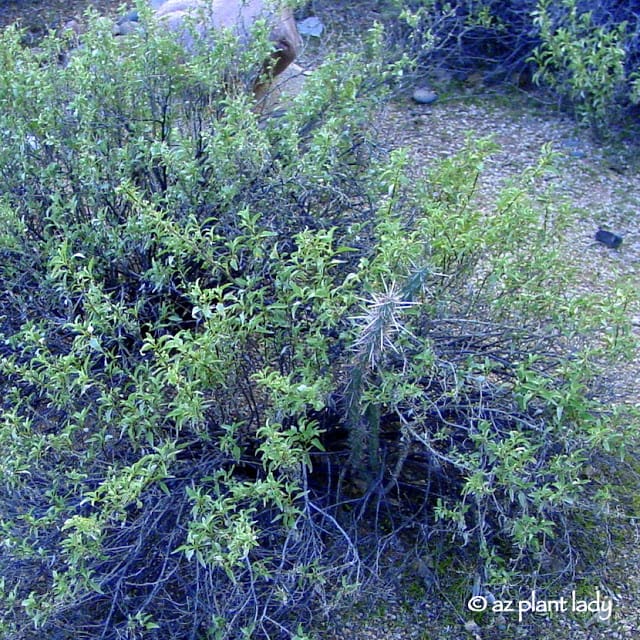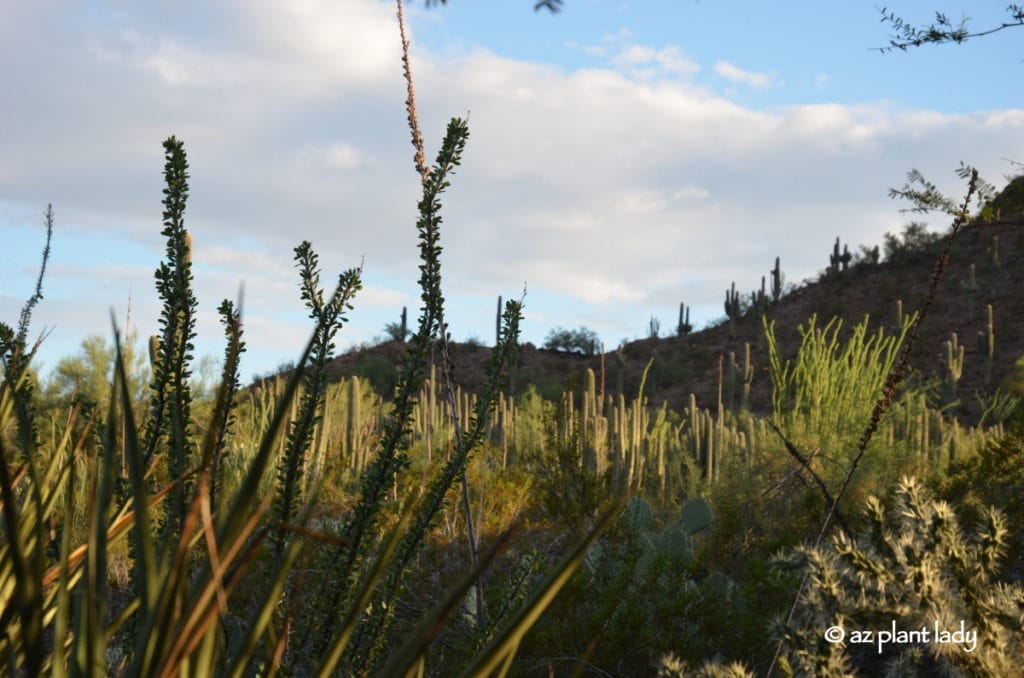
What comes to mind when you think of cactus?
Perhaps the first thing you think of is the spines. If you have ever been unfortunate enough to have been pricked by a cactus, you’ll likely never forget that most of them have needles.
*Did I ever tell you about the time I worked on golf course landscape and backed into a teddy bear cholla and got an entire piece lodged in the back of my leg?
Besides being painful to those who get too near to cacti, did you know that there are important reasons that cacti have spines?
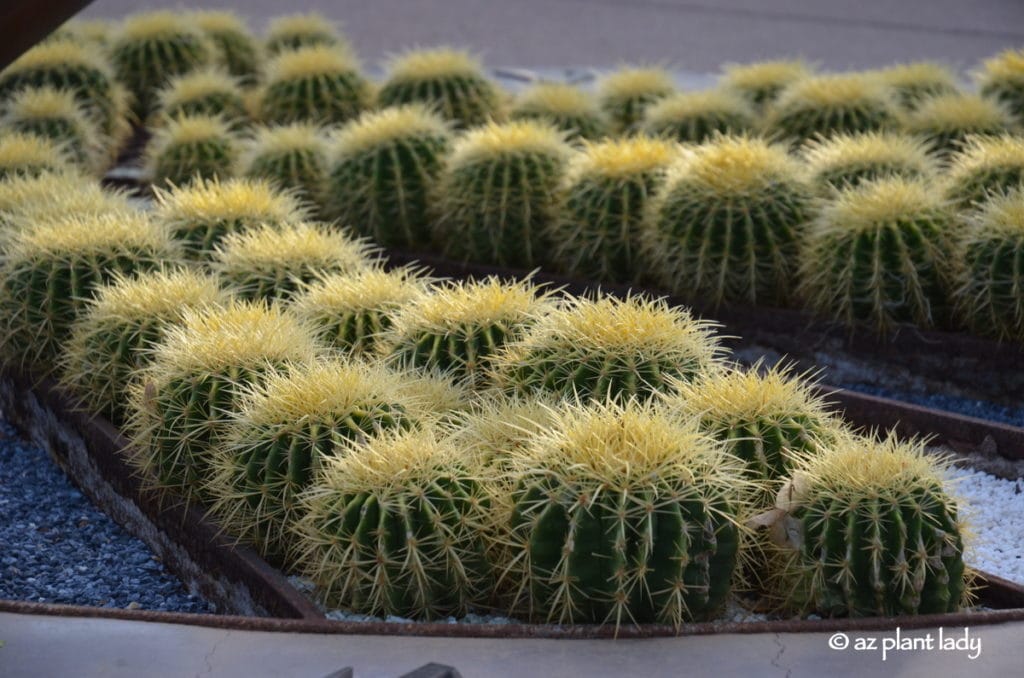
Golden barrel cactuses (Echinocactus grusonii)
First, let’s look at the spines of cactus for what they are – the main part of cactus often functions as a modified stem, and its needles are the leaves.
The most obvious function of cactus spines is to protect the cacti from animals and people. There are, however, a few animals who aren’t deterred by the sharp spines of cacti such as javelina, tortoises and pack rats.
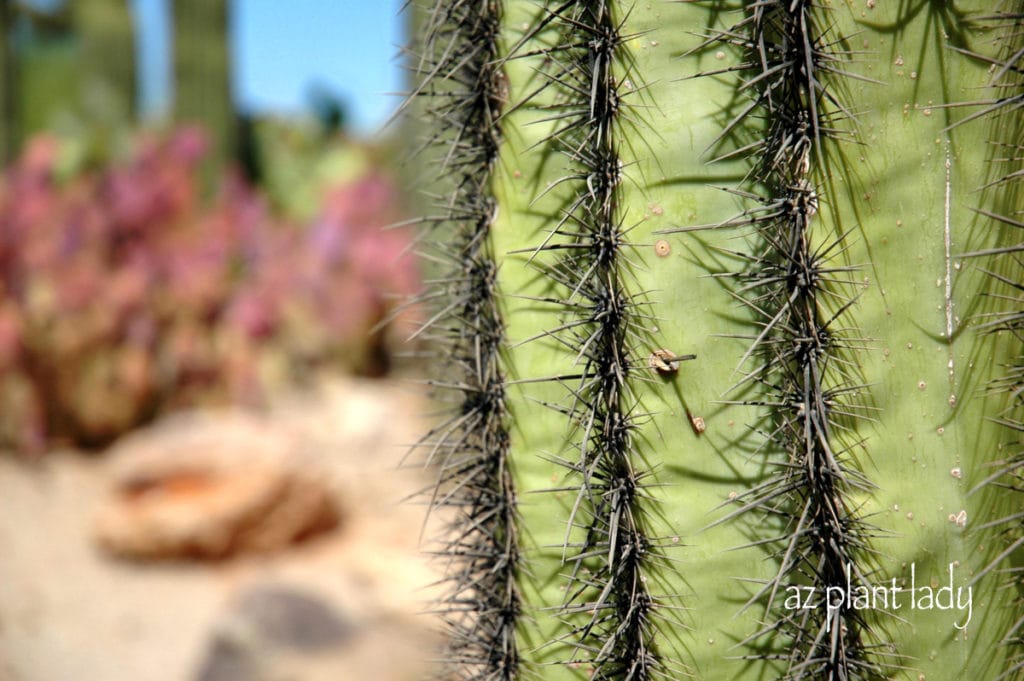
Saguaro cactus (Carnegiea gigantea) spines
Suprise, the primary function of the spines are to actually shade the cactus.
Although just one small spine would hardly provide shade, thousands of them can provide enough.
Why is sun protection needed for the surface of cacti? The shade from the spines let the cactus lose water through the atmosphere. This helps keep the cactus temperature relatively low.
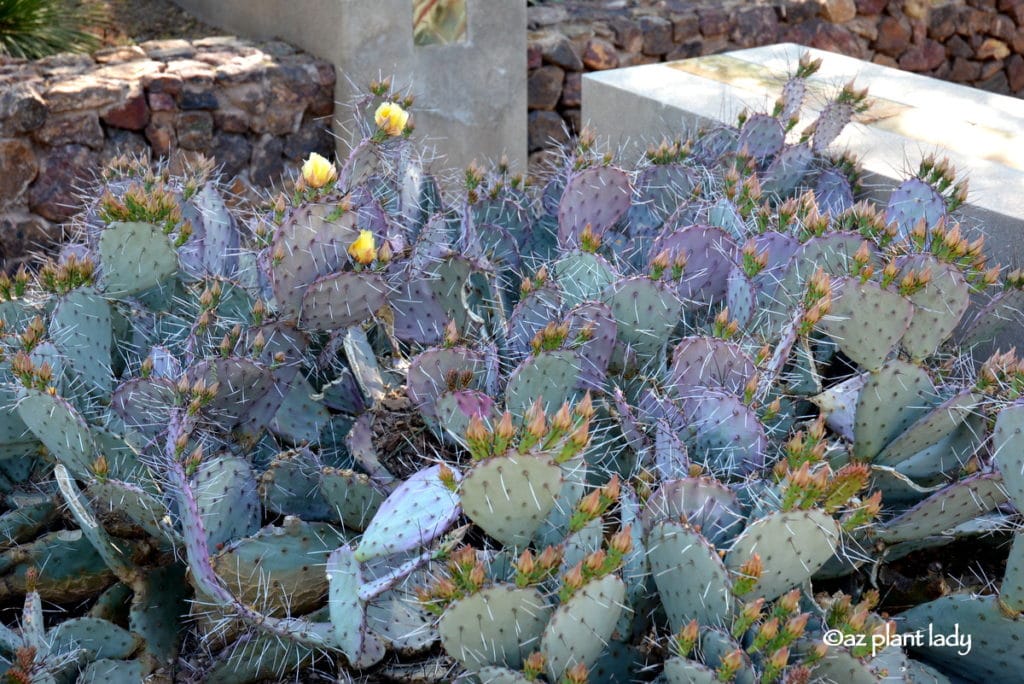
Black-spine prickly pear (Opuntia macrocentra)
Another function that the spines serve is that they help certain species of cacti such as cholla to root and spread.
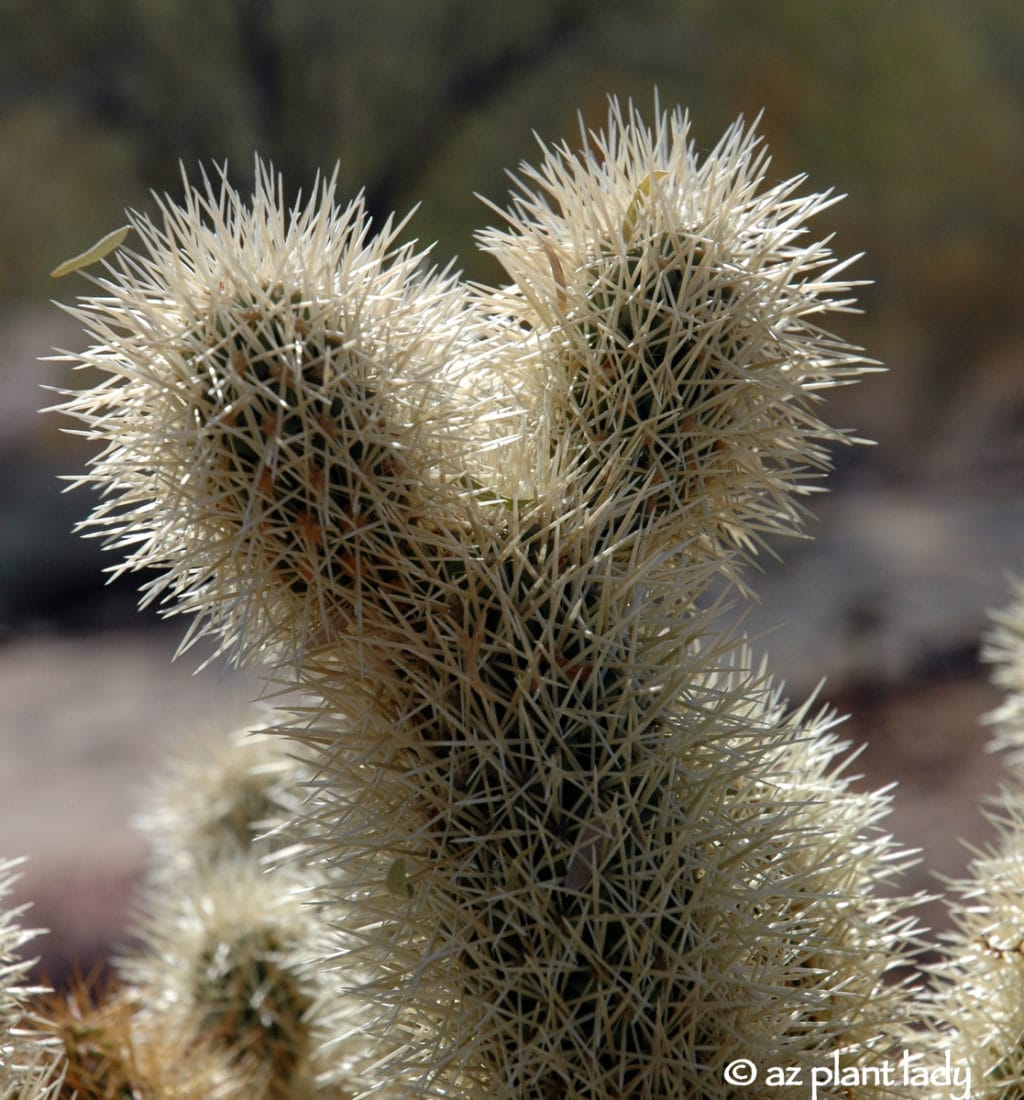
Teddy bear cholla (Opuntia bigelovii)
Spines of the Cholla are specialized to detach and attach onto anything that comes to close. There are tiny barbs at the tips which grab on to anything that gets too close. It almost appears as if they ‘jump’ off of the main cactus as they latch on the unlucky recipient.
Spines of the Cholla are specialized to detach and attach onto anything that comes to close. There are tiny barbs at the tips which grab on to anything that gets too close. It almost appears as if they ‘jump’ off of the main cactus as they latch on the unlucky recipient.
**If like me, you are ever unlucky enough to find a piece of cholla embedded in your clothes or worse, your skin – you can use a comb to help pull out the barbs. When hiking in the desert, it is easy to get them stuck on your shoes. I usually grab a rock and use it to push off the Cholla segment. When all else fails, a good pair of needle-nose pliers works.
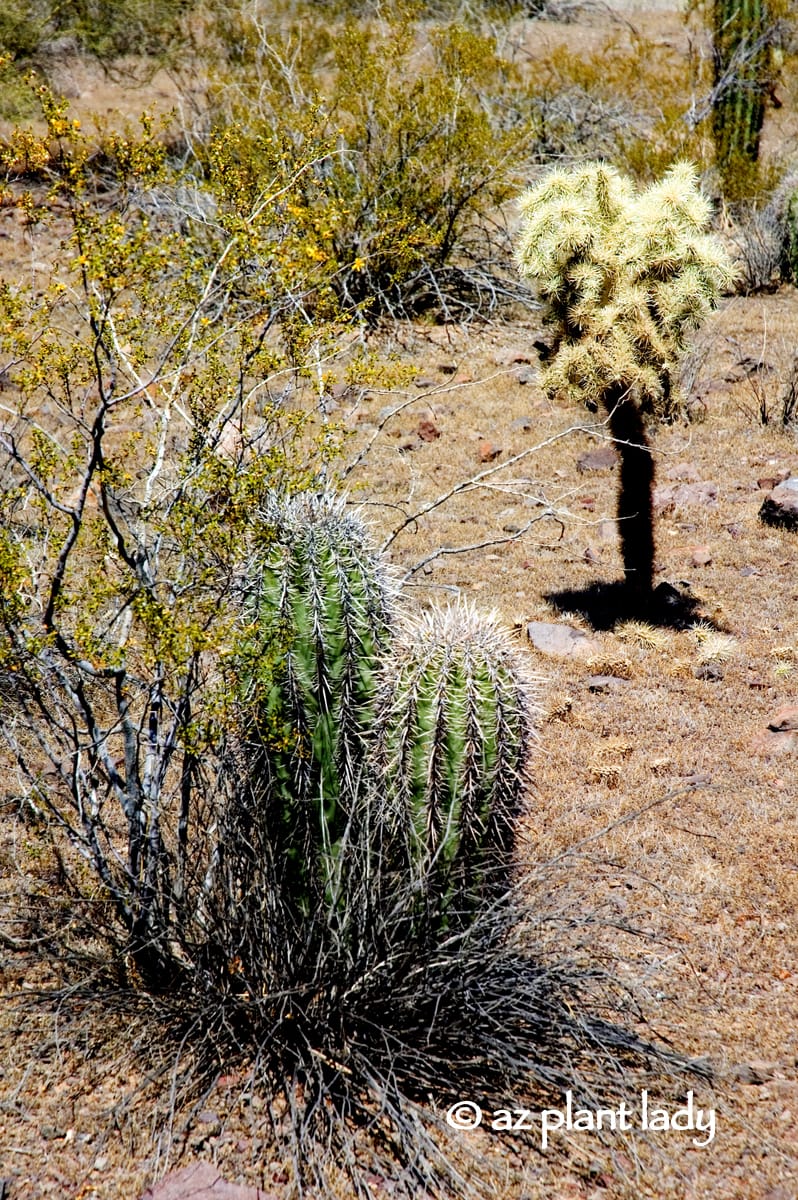
Two young saguaro cactuses are emerging from the shelter of a creosote shrub.
Hopefully, you have a new appreciation for cacti and their spines. But, it’s still important to be careful because it hurts when you get pricked!
What Plant Where? Beautiful Plant Combinations


